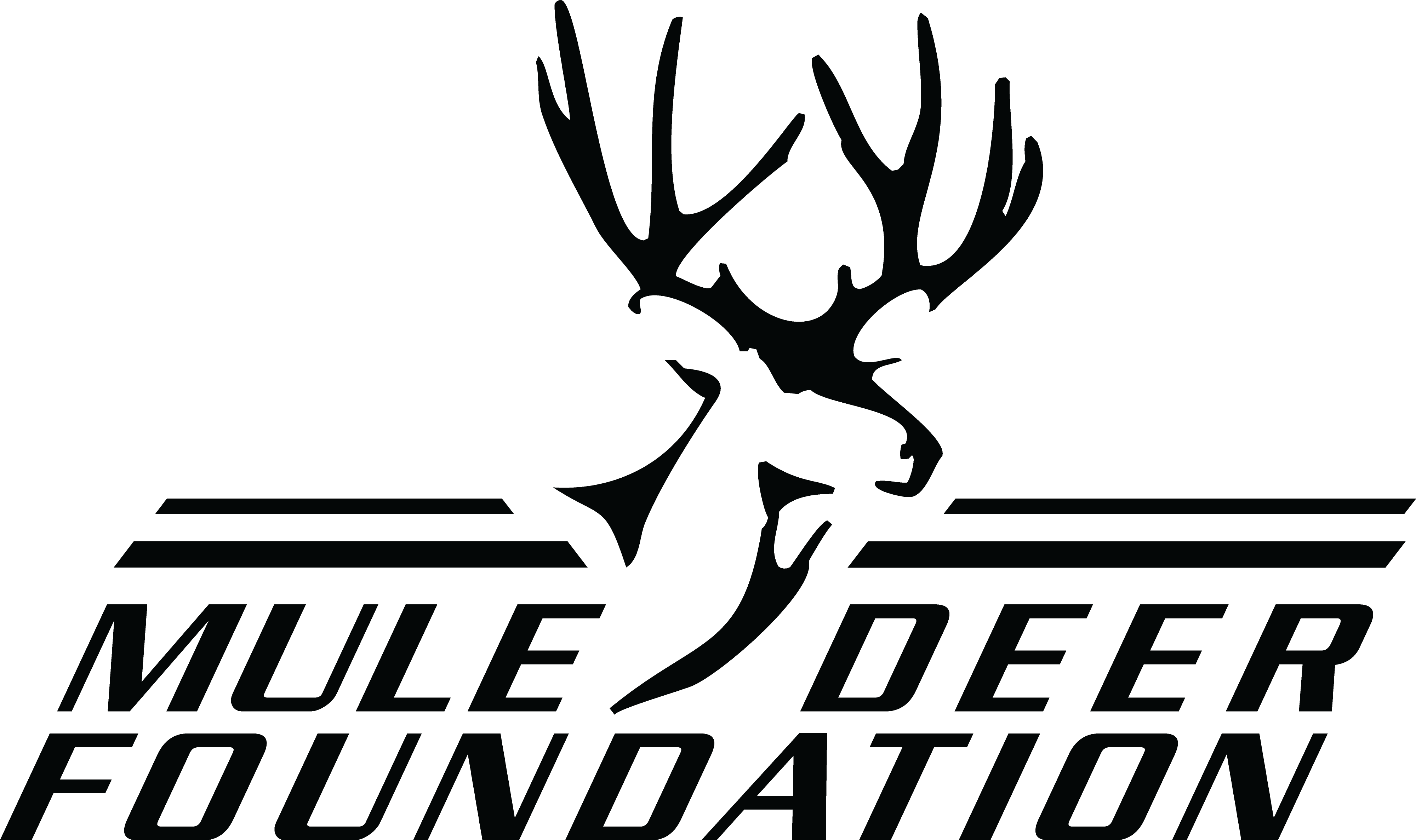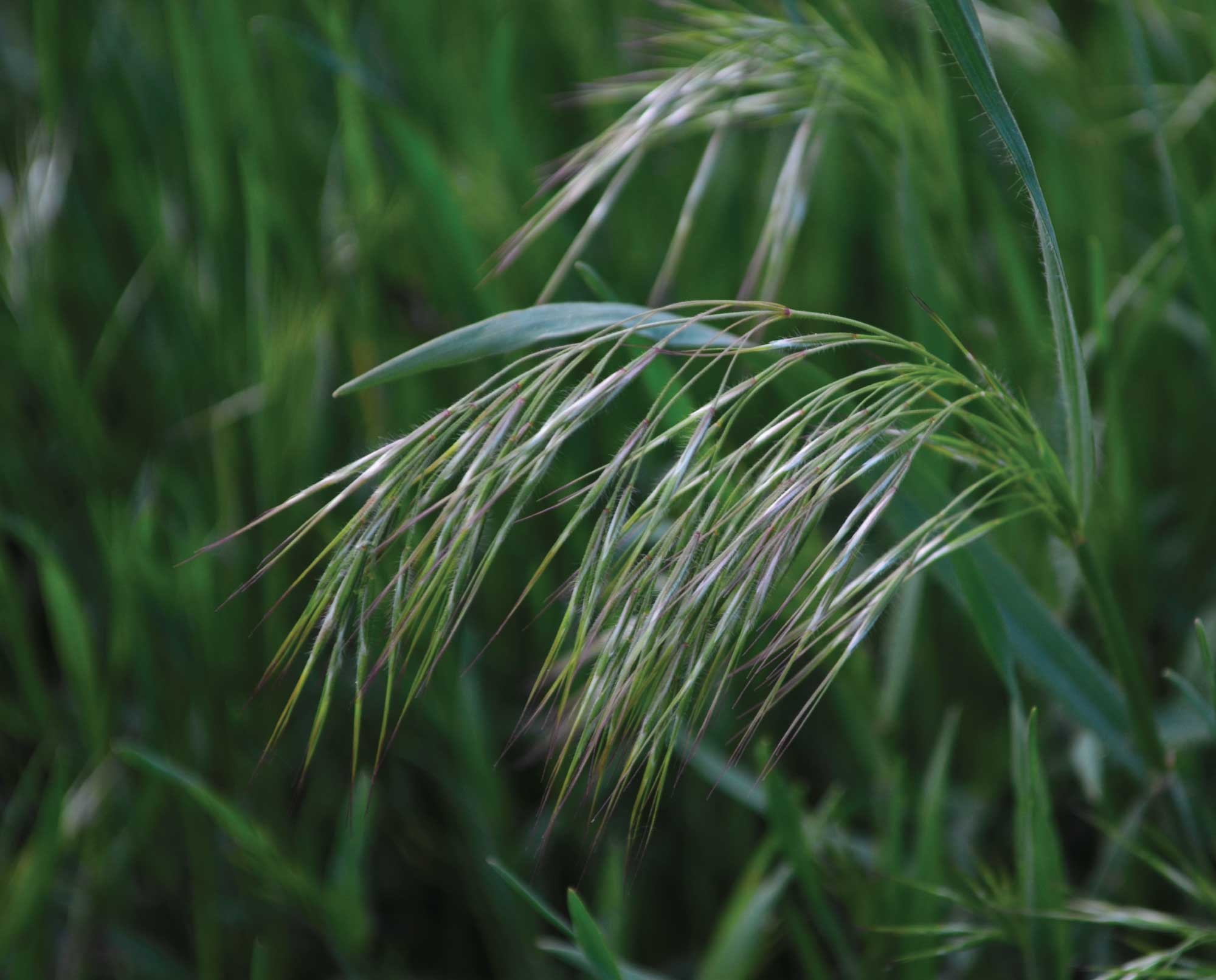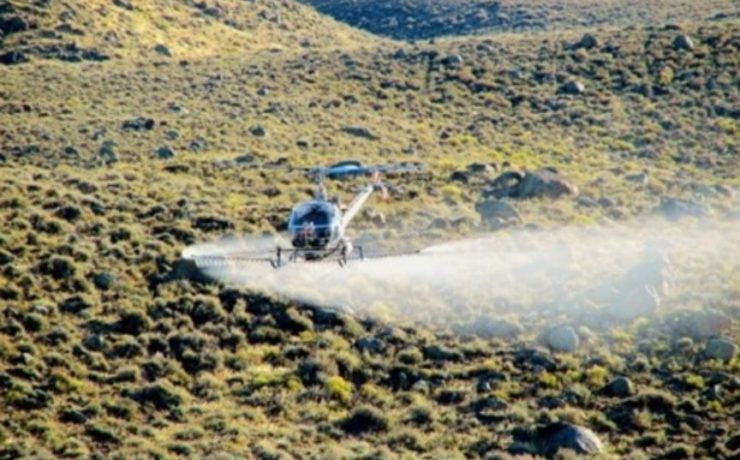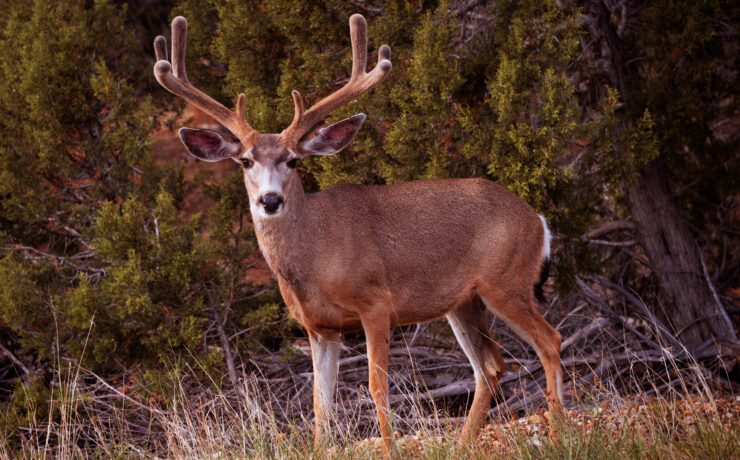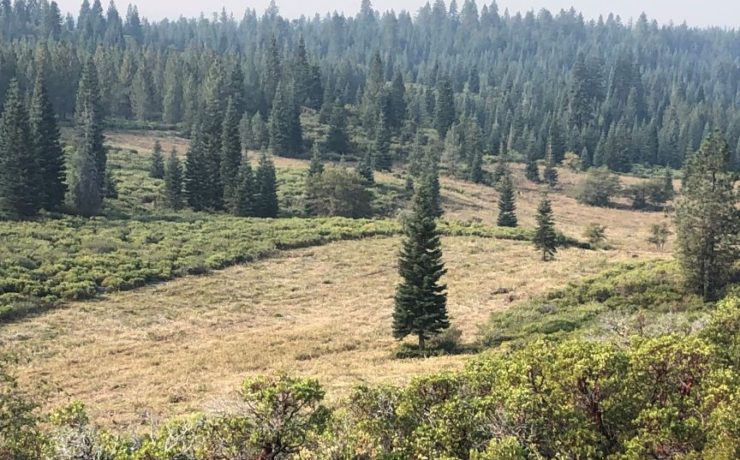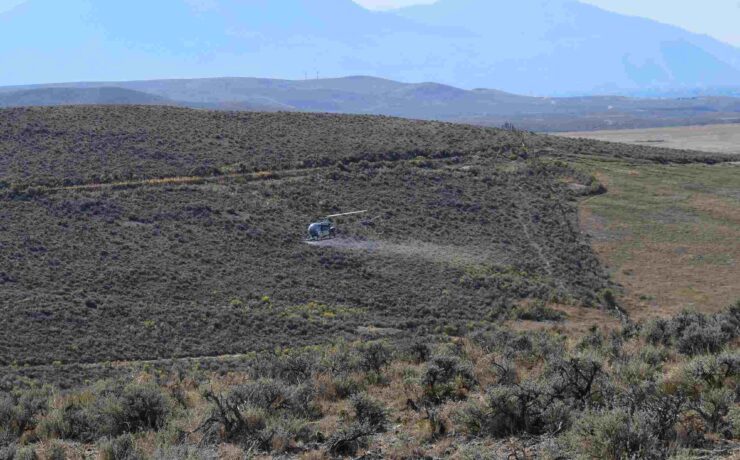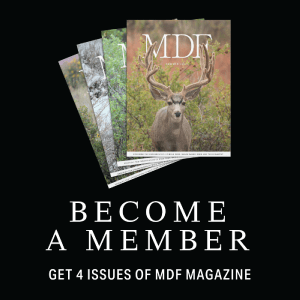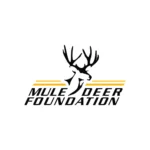Many vegetative species that have been introduced into our native ecosystems from the Mediterranean region take advantage of disturbance and become “invasive” by establishing quickly, growing fast, growing at high densities, and creating a short fire return interval. There are three primary “invasives” of concern to MDF across the West because of their prevalence in rangelands vitally important for deer: Cheatgrass (Bromus tectorum), Medusahead (Taeniatherum caput-medusae), and Ventanata (Ventanata dubia). These annual grasses green up earlier in the spring and have prolific seed dispersal, ultimately allowing them to outcompete native bunchgrasses and forbs. Once they have invaded an area, they can transition the landscape into a monoculture that has limited nutritional value to deer. These grasses are hard to eliminate and control, and they dry quickly in early summer leaving a landscape that is highly flammable. Fires driven by invasive grasses burn hot and fast, making range fires sweep through a broad expanse; then the invasive grass takes advantage of the burned areas to reseed and expand its own footprint on the landscape. As a result, fires in sagebrush rangelands have increased in intensity and frequency ultimately affecting the health of this important habitat.
Federal, state, and private land managers are fighting the invasion of these grasses and MDF has engaged in a number of projects that help them in their battle. MDF is working to eradicate and control these invasives by funding and participating in chemical herbicide applications, seeding native grasses, helping with grazing management, and supporting fire suppression and prevention efforts.


